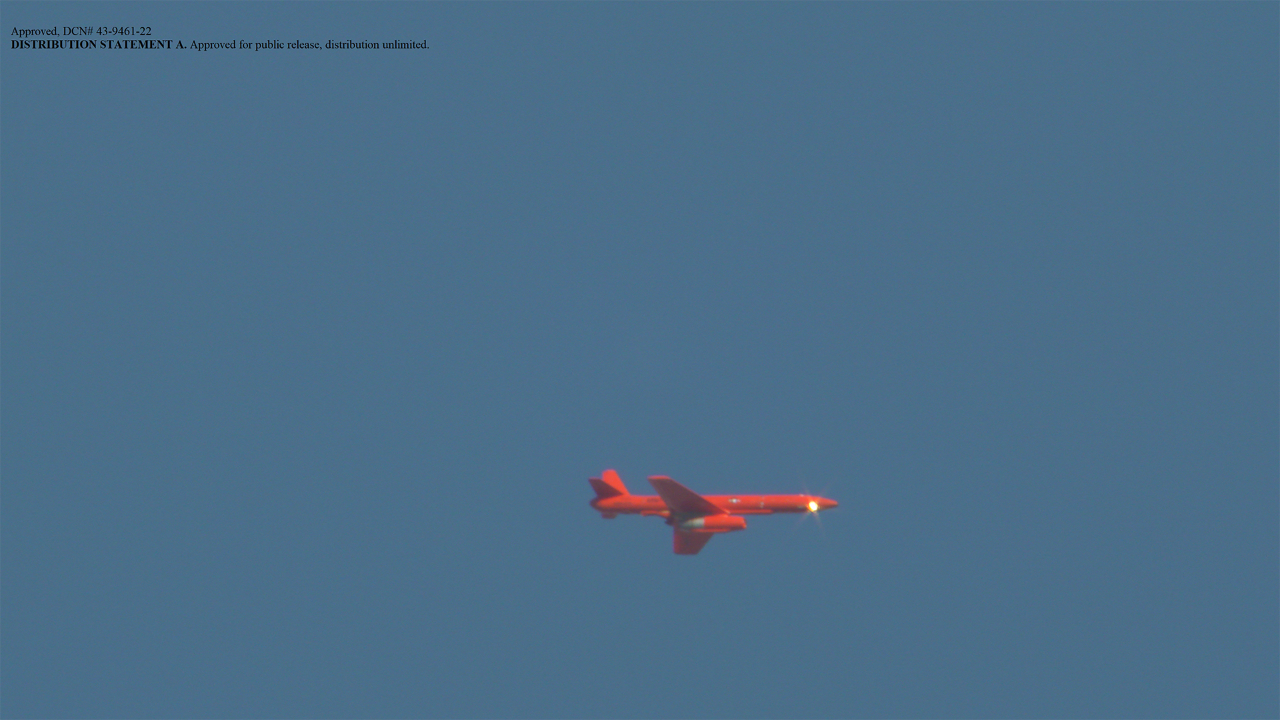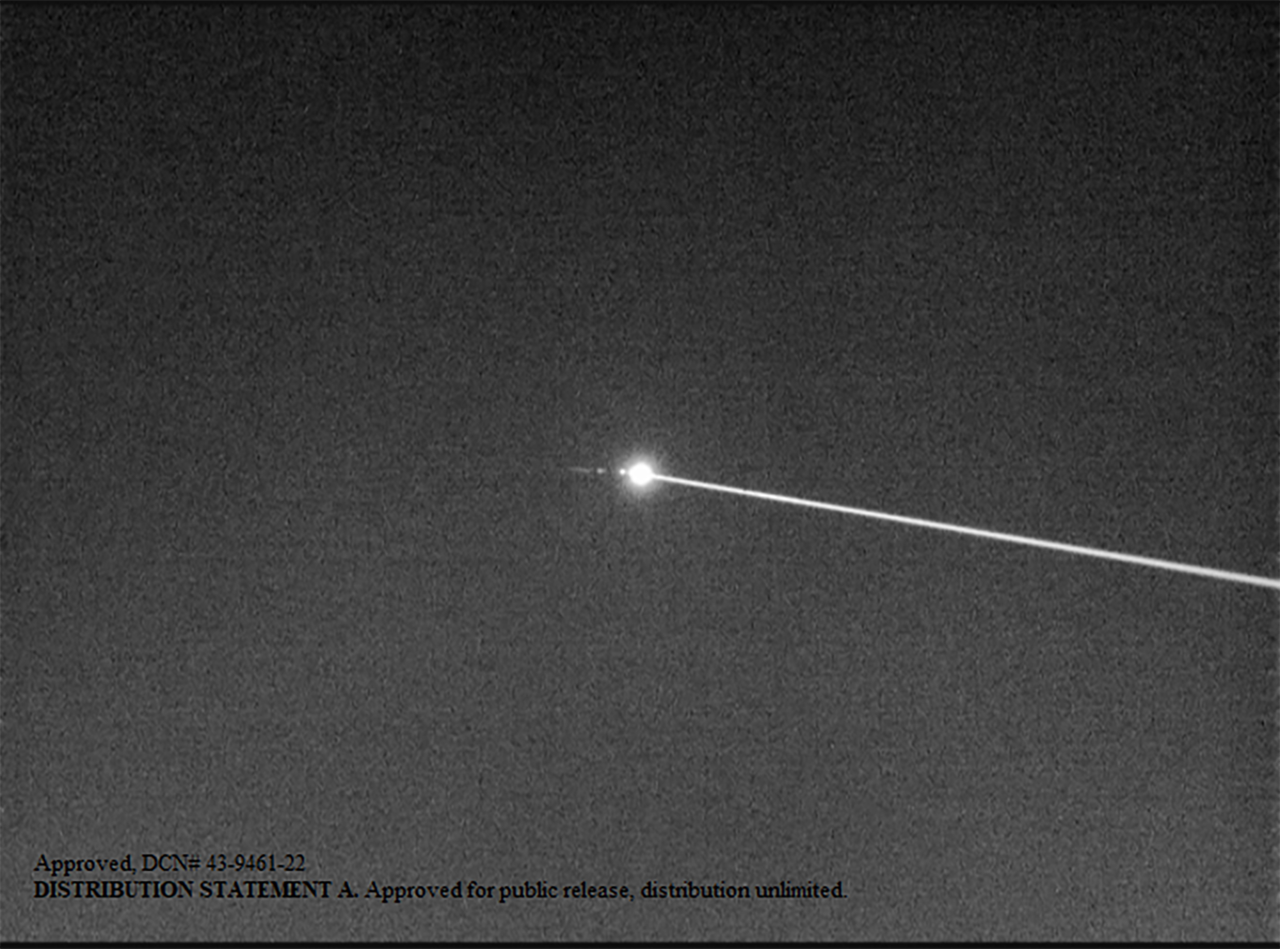Layered Laser Defense: A Force Multiplier

The LLD is a proven ground-based high-power laser weapon system capable of countering targets ranging from unmanned aerial systems and fast-attack boats to cruise missiles. Its high-resolution telescope can also be used to track inbound threats as well as support combat identification and conduct battle damage assessment of engaged targets.
This technology is a force-multiplying capability, ready to integrate into future missions to transition it into the hands of the warfighter. As threats evolve, the LLD shows how directed energy can add one more layer of defense to protect our world.
The LLD proved itself in IRAD-funded demos against unmanned fixed-wing aerial vehicles and quadcopters over the past year at Lockheed Martin Space’s Santa Cruz facility in California and at White Sands Missile Range (WSMR) in New Mexico.
In February, it stepped up its game during a test conducted at the U.S. Army’s High Energy Laser Systems Test Facility at WSMR. The testing was sponsored by the Office of Naval Research (ONR) as part of its partnership with Lockheed Martin and the Office of the Under Secretary of Defense (Research and Engineering). During the demonstration, the LLD tracked and defeated high-speed drones representative of subsonic cruise missiles.
Laser weapon systems are a game-changer in many respects. First, they don’t require much forward supply. Unlike traditional kinetic systems like artillery, they don’t run out of bullets. The LLD’s continuous power and thermal system, provided by Rolls-Royce, allows it to support multiple engagements in a mass raid scenario where other systems would need to stop engagements when their batteries are depleted.
Another big bonus is cost. The cost per engagement for a laser weapon system can be very low because the only consumable item expended is the electricity to run the system.
“The initial cost of a missile battery is comparable to deploying a laser weapon system, but once you get a laser in place, the cost per shot is less and that’s where the LLD is a gamechanger,” said Scott Davidson, Chief Engineer at Lockheed Martin Missiles and Fire Control (MFC). “I don’t see lasers replacing missiles, but they could complement our current missile defense capabilities. I think the combination of missiles and lasers – kinetic energy and directed energy – offers a very lethal and broad range of defense for our warfighter to keep them safe and to keep our assets protected.”
More Than a Science Fiction Laser

Some may expect to see a sci-fi beam emanate from the LLD, but the high energy laser is actually invisible to the naked eye. The laser is outside of the frequency that your eye can see and you have to view it in a different waveband.
And unlike in “Star Wars,” the LLD’s beam doesn’t blow things up on contact. According to Davidson, it’s more akin to precisely focusing a giant blow torch on a distant moving target.
“We’re using coherent light to burn holes through threats to defend our people and assets, as opposed to using kinetic weapons,” Davidson said.
Lockheed Martin’s One Team Approach
Lockheed Martin has spent 40 years designing and developing optical systems, targeting algorithms, electromagnetic energy systems and elevating laser power to create ever-more potent directed energy defense systems. With the LLD, strengths were leveraged from across the corporation, from research and development to a successful set of shootdowns on the range.
"This critical capability is the result of Lockheed Martin’s decades of investment and research. The successful test is the culmination of collaboration across the company to provide an important layer of protection for our nation,” said Paul Shattuck, Director of Directed Energy Systems at Lockheed Martin Space.
All LLD subsystems were designed, developed, and tested by Lockheed Martin and its suppliers—a true testament to the breadth of laser system expertise across the corporation. Teams from three Lockheed Martin laser system centers of excellence contributed system components to make the LLD a success. Rotary and Mission Systems (RMS) provided the high energy laser and fire control software, Space contributed the beam control system, and MFC offered the acquisition tracking, beam director, and engagement management software.
“We’ve been working on the integration for years and for the team to come together in the end to focus on the problems, solve the problems, and go two-for-two on a cruise missile defeat, it’s just amazing, and it’s a tribute to our people,” said Davidson.
Overcoming Challenges for Game-Changing Capability
A defensive laser weapons system must cover the whole threat engagement timeline. From target detection to defeat, and each step in between, the LLD overcomes complications that often occur on the battlefield with proven success.
One challenge comes from the environment. Atmospheric conditions can “bend” a laser beam like a prism and keep it from reaching a target. Engineers from Lockheed Martin’s Space team developed and delivered the LLD beam control system to counteract this effect, keeping the laser beam focused on the target through atmospheric disturbances, such as temperature gradients and wind.
“You’re propagating the laser through air and as you get different temperature variations, the atmosphere changes density and everything else, and that affects the way the beam moves through the atmosphere,” said Shattuck.
The LLD’s beam control system is in some ways similar to glasses or contacts that help people see more clearly.
“So, just like you would get glasses or contacts to give you 20/20 vision, Lockheed Martin had to go and figure out the prescription of the atmosphere and then pre-distort the laser beam. So, as the beam propagated through the air, it cleaned up and when it got to the target, it was perfect,” said Shattuck.
The LLD’s beam control system provides all the commands to point the laser system to the target, stabilizing the line of sight to that target and using adaptive optics.
The faster and more agile the target, the more difficult it is to control the laser beam to destroy it. To overcome this, the LLD’s common path architecture and calibration and alignment system provide precise and stable coalignment of all lasers and sensors, thus achieving precise aimpoint selection and maintenance.
“Our beam control technology enables precision equivalent to shooting a beach ball off the top of the Empire State Building from the San Francisco Bay Bridge,” said Shattuck.
As for how the laser is steered, that’s where the beam director comes in. It uses mirrors to guide and steer the beam. If they were not super reflective and precise, then the laser would burn a hole through the optics like it does the targets.
“I think the heart of the system is the high energy laser and beam control,” said Davidson. “We have to control, contain and monitor that laser through the beam director optics that have to reflect about 99.99% of the energy to keep them from burning up.”
The LLD actually contains three lasers that work symbiotically – a target illuminator laser (TILL), a beacon illuminator laser (BILL), and a high energy laser (HEL). The TILL is used with a fine tracking telescope for engagement quality tracking of targets, while the BILL measures atmospheric distortion and uses adaptive optics to focus the HEL, which is used to destroy the targets.
The weapons systems control system is what transforms the LLD’s subsystems into a defensive weapon. Its battle management system, provided by MFC’s Air and Missile Defense team, monitors airspace, tracks and evaluates potential targets, and identifies and prioritizes threats. It also works with the beam controller to keep the laser on target and determines that the target has been destroyed.
MFC also provided the engagement management software, and “RMS provided portions of the acquisition tracking software and the fire control software, including the operator station hardware, allowing the LLD system to be controlled and operated by a single person,” said John Laible, LLD Senior Program Manager at RMS.
Earning a Place on the Battlefield

It’s clear that lasers have earned their place on the battlefield, and the LLD has shown that Lockheed Martin can deliver critical capability at the speed of light.
The teams who produced the LLD foresee its directed energy technology becoming part of a layered defensive system, where lasers are used when appropriate, allowing more traditional munitions to be used when they’re needed the most.
Some want the LLD to evolve so that it can be used to protect high-value assets. For example, they believe the technology could be attached to aircraft or ships to take out cruise missiles or other threats before they make it to bases.
“We could use them for large aircraft that are required for tactical missions. You have to defend them and I think there’s an opportunity for us to make it into a marketing space that nobody is in right now. Nobody is in the tactical airborne laser weapon market,” said Davidson.
Regardless of its application, the future of this technology is bright.
“The cruise missile surrogate engagement at White Sands Missile Range shows the feasibility of defeating a new class of threats with laser weapon systems, and positions Lockheed Martin to pursue new opportunities to protect warfighters at the speed of light,” said Laible. “Technology and lessons learned from LLD are already being applied and used on other laser weapon systems that Lockheed Martin is developing for our customers.”
Lockheed Martin stands ready to partner with the military services and agencies to transition this capability to the warfighter.
Any opinions, findings and conclusions or recommendations expressed in this material are those of the author(s) and do not necessarily reflect the views of the Office of Naval Research.




